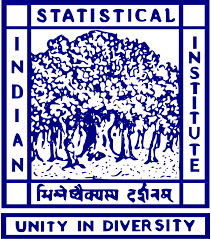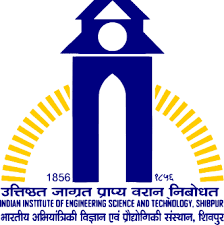
Dr. Siladittya Manna
Research Associate, IISc
Research Focus
I am a passionate researcher specializing in federated learning, self-supervised learning, computer vision, and medical image analysis. I focus on developing innovative federated learning framework for vision-language models and computer vision applications in medical image analysis. My current interest lies in developing self-supervised federated learning frameworks for domain heterogeneous data. I am also interested in developing solutions for bridging the gap between generalization and personalization in federated learning.
Current Experience
I am currently working as Research Associate at the Visual Computing Lab, Dept. of Computational and Data Science, Indian Institute of Science, Bangalore, India under the supervision of Prof. Anirban Chakraborty. My research primarily focuses on developing federated learning frameworks for vision-language models. I am also involved in projects related to self-supervised learning and its applications in computer vision and medical image analysis.
Past Experience
I worked as a Senior Research Assistant at Hong Kong Baptist University under the supervision of Prof. Yiu-Ming Cheung. My research primarily focused on developing federated learning frameworks for domain heterogeneous data and generalization in federated learning. Before that, I completed my PhD under the supervision of Prof. Umapada Pal from Indian Statistical Institute, Kolkata, where my research focused on self-supervised learning and its applications in medical image analysis. I have also worked on signature verification, writer identification, other document analysis tasks. During my Ph.D. I also worked closely with Dr. Saumik Bhattacharya from Indian Institute of Technology, Kharagpur.
Current Research Topics
Latest Announcements
Recent publications and project updates
Publications
Peer-reviewed research contributions to the scientific community
Journal Publications
IEEE Transactions on Artificial Intelligence • 2025
ACM Transactions on Asian and Low-Resource Language Information Processing • 2025
Transactions on Machine Learning Research • 2024
IEEE Transactions on Artificial Intelligence • 2023
arXiv preprint arXiv:2111.12664v2 • 2023
Pattern Recognition Letters • 2022
Conference Publications
27th International Conference on Pattern Recognition 2024 • 2024
International Conference on Document Analysis and Recognition • 2023
2022 26th International Conference on Pattern Recognition (ICPR) • 2022
2022 IEEE International Conference on Image Processing (ICIP) • 2022
Academic Profiles & Affiliations
Connect with me across various academic and professional platforms
Research Collaborations
Building partnerships and advancing research together
IIT Kharagpur
Collaboration with Dr. Saumik Bhattacharya
NIT Durgapur
Collaboration with Dr. Sayantari Ghosh
ISI Kolkata
Active member and contributor
Future Collaborations
More research partnerships coming soon
Professional Background
Academic journey and professional experience
Work Experience
Research Associate
Indian Institute of Science • Bangalore, India
Conducting research in Federated learning for Vision-Language Models.
Senior Research Assistant
Hong Kong Baptist University • Hong Kong
Conducted research in Federated learning with applications in medical image segmentation, augmented with Self-Supervised learning principles.
Educational Qualifications
Ph.D. in Computer Science
Indian Statistical Institute • Kolkata, India
Thesis: Self-Supervised Learning and its Applications in Medical Image Analysis
Supervisor: Prof. Umapada Pal
M.Tech (Under Dual Degree)
Indian Institute of Engineering Science and Technology • Shibpur, Howrah, India
VLSI and Microelectronics
Supervisor: Dr. Ankita Pramanik
B.Tech (Under Dual Degree)
Indian Institute of Engineering Science and Technology • Shibpur, Howrah, India
Electronics and Telecommincation Engineering
Professional Activities
Contributing to the scientific community through various roles and initiatives
Teaching Experience
Teaching Assistant
Assisted in teaching advanced machine learning concepts like object detection, tracking and segmentation, and evaluated student projects on deep learning and computer vision.
Conducted tutorial sessions on machine learning algorithms for the first semester students of M.Tech (ETCE).
Mentorship
• Mentored 1 intern student on projects related to self-supervised learning and signature verification with successful publications in ICPR, ICIP.
• JU, Kolkata: 1
• Currently, mentoring 4 intern students on projects related to self-supervised medical image analysis.
• IIT Delhi: 1 • IIT BHU: 1 • IIT Kharagpur: 1 • MU, Jaipur: 1
• Mentored several under-graduate students on computer vision and machine learning for their final year projects.
• IIT Kharagpur: 4
• Mentored several post-graduate students on computer vision and machine learning for their M.Tech. thesis.
• IIT Kharagpur: 3 • ISI Kolkata: 1 • RKM, Belur: 2
Tutorial and Talks
Workshop Tutorials
Focused on self-supervised learning applications in medical imaging with practical implementations and case studies.
Editorial & Review Activities
Journal Reviewer
Conference Reviewer
LLM Based Applications in Progress
Exploring and building innovative AI-powered solutions
Developing an LLM-based application for medical document analysis and diagnostic assistance using computer vision and natural language processing.
Building an intelligent system that searches for research papers and summarizes them. Creates a new github repository containing the papers in the user's profile.
Creating an LLM-based tool that helps developers with medical image analysis.
Blog: The Owl
Learn, Share, Grow - Technical insights and tutorials
Segmentation masks are fundamental in computer vision applications, from medical imaging to autonomous vehicles. Visualising these masks...
Read on Mediumwith calflops and torchprofile - Learn how to measure computational complexity and efficiency of your PyTorch models...
Read on MediumIn medical imaging, handling large datasets efficiently is crucial for storage and processing purposes. Neuroimaging Informatics...
Read on MediumOn Multiple Nodes using SLURM
Read on Medium4 articles available
Other Activities
Exploring creativity beyond academic research
Photography
Capturing moments through the lens











"Photography is the art of capturing moments that would otherwise be lost to time."




